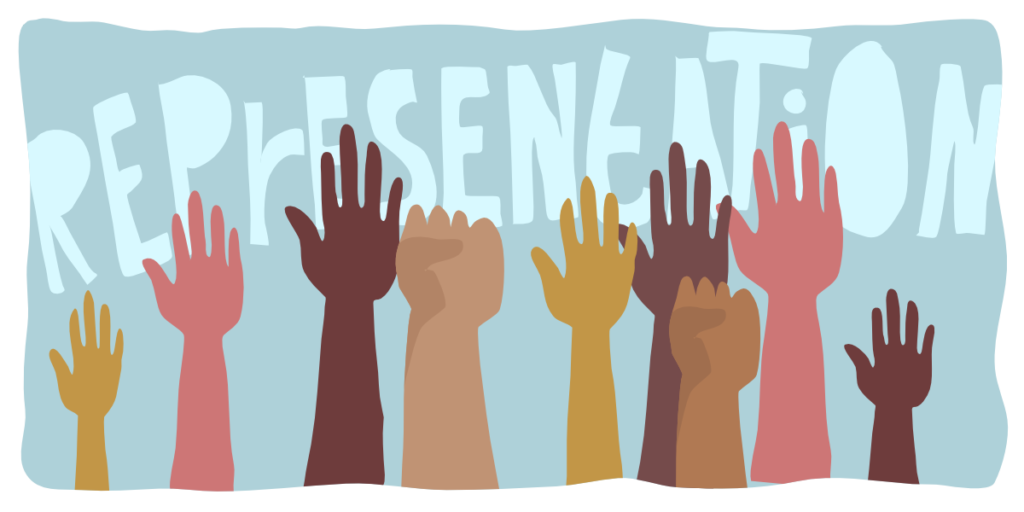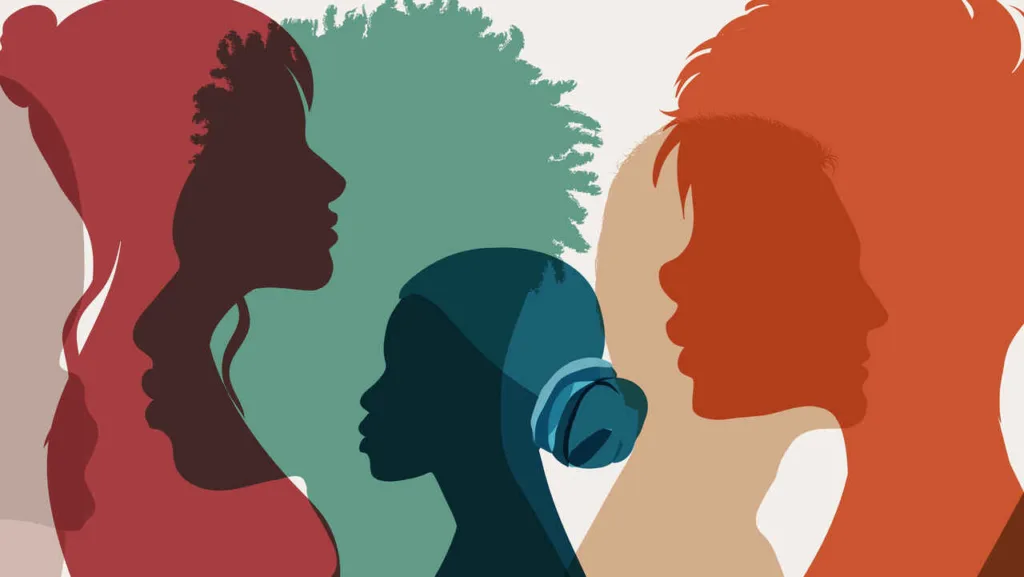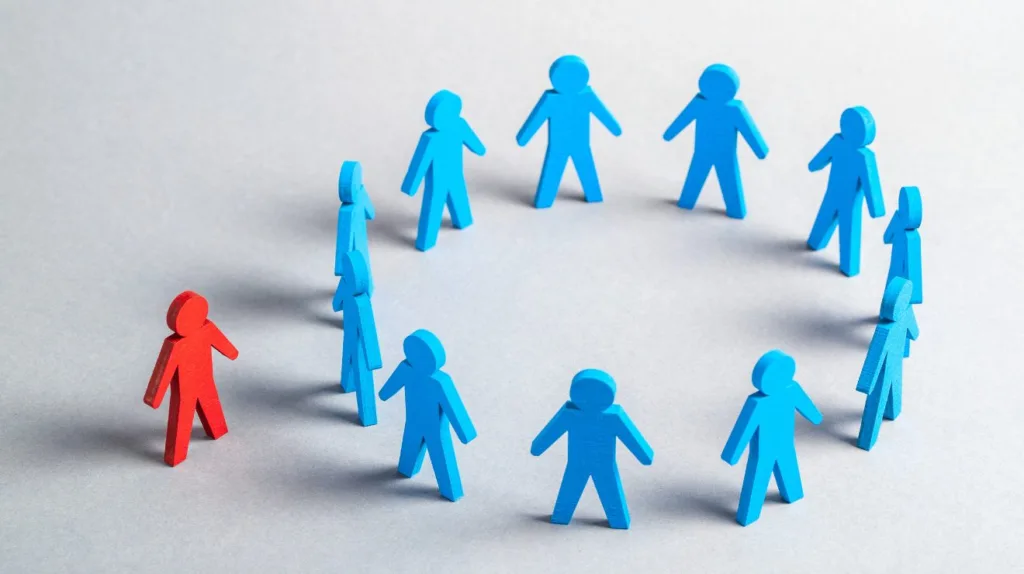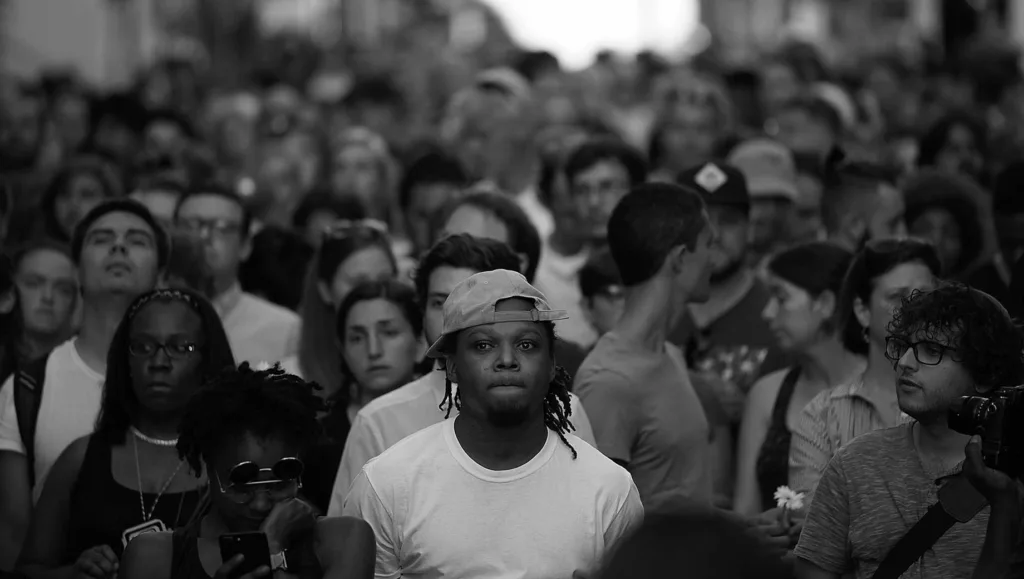In today’s society, it is important to recognize and address the disparities and inequities that exist among different groups of people. Two terms that are often used interchangeably are historically excluded and underrepresented groups. While there may be some overlap beteen the two, they are not the same thing.
Historically excluded groups refer to individuals who have been marginalized and excluded from mainstream society due to their identity. This can include, but is not limited to, individuals who identify as being part of the BIPOC (Black, Indigenous, and People of Color) and LGBTQ communities. These groups have historically faced discrimination, prejudice, and systemic barriers that have prevented them from achieving equal opportunities and access to resources.
On the other hand, underrepresented groups refer to subgroups of the population whose representation is disproportionately low relative to their numbers in the general population, or in the case of clinical trials or patient registries, disease population. This can include individuals of different races, ethnicities, sexual orientations, socioeconomic status, and other factors.
It is important to note that historically excluded groups are often a subset of underrepresented groups, but not all underrepresented groups are historically excluded. For example, while individuals who identify as LGBTQ are historically excluded, individuals who come from low-income backgrounds may be underrepresented but may not necessarily be historically excluded.
The lack of representation of these groups can have significant consequences. For example, in the medical field, not having diverse patient populations can lead to inadequate treatment and medications that may not work for certain groups of people. In academia, not having diverse faculty and student populations can lead to a lack of perspective and understanding of different communities and cultures.
To address these issues, it is important to actively work towards increasing representation and inclusivity for both historically excluded and underrepresented groups. This can include implementing policies and initiatives that promote diversity and inclusion, providing resources and support for individuals from these groups, and actively seeking out and recruiting individuals from underrepresented and historically excluded groups.
While there may be some overlap between historically excluded and underrepresented groups, they are not the same thing. Both groups face unique challenges and barriers that must be addressed in order to create a more equitable and inclusive society. It is up to all of us to work towards creating a more diverse and inclusive world.
Understanding Historically Excluded Groups
Historically excluded groups refer to individuals who have been systematically marginalized and discriminated against based on their identity or membership in a particular social group. This can include individuals who identify as part of the Black, Indigenous, and People of Color (BIPOC) community, LGBTQ individuals, people with disabilities, and other minority groups.
Historically excluded groups have been subjected to various forms of discrimination, including but not limited to, social exclusion, economic exploitation, and political disenfranchisement. These forms of discrimination have often been institutionalized and perpetuated through laws, policies, and social norms.
The experiences of historically excluded groups have been shaped by a range of factors, including race, ethnicity, gender, sexual orientation, religion, and socioeconomic status. These factors can intersect and compound to create unique and complex experiences of marginalization and exclusion.
In recent years, there has been growing recognition of the importance of addressing the nees and concerns of historically excluded groups. This has led to the development of various policies and initiatives aimed at promoting equity, inclusion, and diversity in different sectors of society.
Some of the initiatives that have been developed to address the needs of historically excluded groups include affirmative action programs, diversity and inclusion training, and policies that promote representation and participation of marginalized groups in decision-making processes.
Historically excluded groups refer to individuals who have been systematically marginalized and discriminated against based on their identity or membership in a particular social group. The experiences of these groups are shaped by a range of factors, and there have been various initiatives developed to address their needs and promote equity, inclusion, and diversity.

Definition of an Underrepresented Group
An underrepresented group refers to a subset of the population whose representation is significantly lower than their proportion in the general population, or in the case of medical trials or patient databases, the disease population. This group may be defined by various characteristics, including but not limited to race, ethnicity, gender, sexual orientation, socioeconomic status, disability, age, or geographic location.
The underrepresentation of certain groups can have significant consequences, such as limited access to resources, unequal opportunities, and exclusion from decision-making processes. In medical research, for example, the underrepresentation of certain groups can lead to a lack of data on the effectiveness and safety of treatments for tose groups, resulting in healthcare disparities and inadequate healthcare provision.
To address underrepresentation, efforts are being made to increase diversity and inclusivity in various fields, including education, employment, and healthcare. This can involve targeted recruitment and outreach, creating safe and inclusive environments, and addressing systemic barriers and biases that contribute to underrepresentation.
An underrepresented group is a subset of the population that is proportionally lower in numbers than their representation in the general population or disease population. Efforts to address underrepresentation are crucial for promoting inclusivity, diversity, and equitable access to resources and opportunities.
The Difference Between Underrepresented and Marginalized
In academic and social contexts, the terms “underrepresented” and “marginalized” are often used to refer to groups of people who face various forms of exclusion and disadvantage in society. While these terms are sometimes used interchangeably, they do have distinct meanings.
The term “underrepresented” generally refers to groups of people who are not adequately represented in particular fields, institutions, or areas of society. For example, women may be underrepresented in certain STEM fields, or people of color may be underrepresented in leadership positions in corporate settings. Underrepresentation can occur due to various factors, such as discrimination, bias, lack of access to resources or opportunities, or systemic barriers.
On the other hand, the term “marginalized” typically refers to groups of people who are pushed to the margins of society and are often excluded from full participation in economic, social, or political life. Marginalization can take many forms, such as poverty, homelessness, discrimination, social stigma, or lack of access to education, healthcare, or legal protections. Marginalized groups may also experience intersectional forms of oppression, where multiple aspects of thir identity, such as race, gender, sexuality, or disability, interact to create unique forms of marginalization.
While underrepresentation and marginalization are related concepts, underrepresentation focuses on the lack of representation in specific areas, while marginalization refers to the exclusion and disadvantage experienced by groups due to various forms of oppression and exclusion.
Underrepresented Groups
In the context of demographics, underrepresented refers to groups whose proportion of the population in a given setting is lower than their proportion in the general population. These groups can be defined by a variety of factors, such as race, ethnicity, gender, sexual orientation, religion, age, and ability. In the United States, underrepresented minorities typically include Black and African American, Hispanic and Latinx, Native American and Alaskan Native, and Pacific Islander individuals. However, it is important to note that the specific groups considered underrepresented may vary depending on the country or region being discussed. Additionally, underrepresentation can occur in varios settings, such as workplaces, educational institutions, and political bodies, and can have a significant impact on opportunities, access to resources, and overall well-being.
Historically Underrepresented Students
Historically Underrepresented Minority (HURM) students are tose who have been historically underrepresented in the US population. This typically includes African Americans, American Indians/Alaskan Natives, and Hispanics. These groups have traditionally comprised a minority of the US population, and as a result, they have often faced challenges in accessing educational opportunities and resources.
However, it is important to note that the definition of HURM students is not limited to these three groups. A broader definition also includes Asian and Pacific Islanders who have faced similar challenges in accessing higher education and resources.
HURM students are often disadvantaged in terms of access to educational resources, mentorship, and support services. They may also face discrimination and bias in the classroom and in the broader society.
To address these disparities, many universities and institutions have developed programs and initiatives aimed at supporting HURM students, including financial aid, mentorship programs, and academic support services. These programs aim to increase the representation of historically underrepresented groups in higher education and to promote diversity and inclusivity in the academic community.
HURM students are those who have historically been underrepresented in the US population, including African Americans, American Indians/Alaskan Natives, Hispanics, and Asian and Pacific Islanders. They face unique challenges in accessing educational opportunities and resources, but efforts are being made to support and promote their success in academia.

What Constitutes an Underrepresented Minority?
An underrepresented minority (URM) is a term used to describe a U.S. citizen who identifies as Black/African American, Hispanic/Latino, or American Indian. These groups are considered underrepresented in vaious fields, including higher education, STEM, and the workforce. The term “underrepresented” suggests that these groups are not adequately represented in these fields, and therefore, there is a need to increase their representation to ensure diversity and inclusivity.
It is important to note that all other Race/Ethnicity categories or Non-U.S. citizens are considered as a Non-Underrepresented Minority (Non-URM). This means that individuals who are not part of the URM group do not face the same systemic barriers and challenges that URMs may encounter in their pursuit of academic and professional opportunities.
URM representation has been a topic of discussion in many organizations and institutions across the country, with efforts being made to increase their representation in various fields. These efforts include initiatives such as diversity and inclusion programs, targeted recruitment strategies, and scholarships or grants specifically for URMs.
The URM group includes individuals who identify as Black/African American, Hispanic/Latino, or American Indian. These groups are considered underrepresented in various fields, and there are ongoing efforts to increase their representation to ensure diversity and inclusivity.
The Underrepresentation of Certain Groups
An alternative term for underrepresented can be “under-served,” “marginalized,” or “disadvantaged.” Other synonyms may include “underprivileged,” “under-resourced,” “underfunded,” “neglected,” or “ignored.” These terms refer to groups or individuals who do not have adequate representation, access to resources, or opportunities to participate fully in a particular context or society. It is important to use precise language when discussing underrepresented groups to avoid further marginalizing or stigmatizing them.
Underrepresentation: An Example
Underrepresentation refers to the situation whre a particular group is represented in a smaller proportion in a particular context compared to their overall representation in the larger population. For example, if a country’s population is composed of 30% African Americans but only 5% of African Americans are represented in higher education institutions, then African Americans are underrepresented in higher education.
Another example of underrepresentation could be in the workplace. If a company has a gender balance of 50:50 in its overall workforce, but only 20% of women are in leadership positions, then women are underrepresented in leadership roles.
Underrepresentation can also occur in politics. For instance, if a particular ethnic group makes up 15% of the population in a given country, but only 5% of elected officials are from that group, then that group is underrepresented in politics.
Underrepresentation occurs when a group is not proportionately represented in a particular context compared to their representation in the larger population.
Addressing the Needs of Disadvantaged Communities
When referring to communities that lack access to resources or services, it is important to use terminology that accurately reflects the situation. While the term “underserved” is commonly used, it is important to note that it primarily refers to a lack of access to services. Therefore, it may not be the best term to use when referring to larger issues of poverty and inequality.
A more accurate and comprehensive term to use when referring to these communities is “under-resourced.” This term encompasses a wider range of issues beyond just access to services. It includes factors such as economic, social, and political challenges that contribute to the lack of resources in a community.
Other terms that can be used to describe these communities include “marginalized,” “disadvantaged,” and “impoverished.” However, it is important to note that each of these terms has its own nuances and should be used thoughtfully depending on the context in which they are being used.
When referring to communities that lack access to resources and services, it is important to use terminology that accurately reflects the situation. “Under-resourced” is a more comprehensive term that can be used to describe these communities, while oher terms such as “marginalized,” “disadvantaged,” and “impoverished” can also be used depending on the context.

The Difference Between Underserved and Underrepresented
Underserved and underrepresented are often used interchangeably, particularly in the context of the sciences and engineering. However, while both terms refer to groups that are not adequately represented or supported, they have slightly different meanings.
Underrepresented typically refers to groups that are not proportionally represented in a particular field or industry. For example, women and minorities are often considered to be underrepresented in STEM fields, as they are less likely to hold positions or earn degrees in these areas than their male or non-minority counterparts.
Underserved, on the othr hand, refers to groups that do not have access to the same resources, opportunities, or support as others. This can include individuals who live in low-income or rural areas, people with disabilities, and those who are not fluent in the language of instruction or communication.
In some cases, a group may be both underrepresented and underserved. For example, Native American students may be underrepresented in higher education and also underserved due to a lack of resources and support for their unique cultural and educational needs.
It is important to recognize the differences between these terms in order to understand and address the specific challenges faced by different groups. By acknowledging and addressing both underrepresentation and underservice, we can work towards a more equitable and inclusive society.
Understanding the Impact of Marginalization
If you’re seeking a substitute for the word “marginalized,” there are several synonyms you can consider. Some options include “excluded,” “ostracized,” “alienated,” “sidelined,” “disenfranchised,” “disregarded,” “ignored,” “suppressed,” “underrepresented,” “oppressed,” “deprived,” “relegated,” “subjugated,” “neglected,” “overlooked,” “discriminated against,” “muted,” “silenced,” “victimized,” “underprivileged,” and “misperceived.” Each of these words conveys a sense of being pushed to the sidelines or overlooked in some way, and choosing the most appropriate term will depend on the context in which you’re using it.
The Impact of Under Representation
Underrepresentation refers to the lack or insufficient representation of a particular group or demographic in a particular setting. This term can be applied to a variety of situations, including politics, education, and the workplace. For example, if a certain racial or ethnic group is significantly underrepresented in a particular industry or occupation, it means that they are not proportionally represented in relation to their overll population. This can be due to various factors such as discrimination, lack of access to resources and opportunities, or cultural barriers. Underrepresentation can have negative impacts on the individuals and communities involved, as it can limit their ability to fully participate in society and achieve their goals. It is important to address underrepresentation and promote diversity and inclusion in all aspects of society to ensure equal opportunities for all individuals.
Underrepresented Communities
Underrepresented communities refer to groups of individuals who are not adequately represented or givn equal opportunities in various aspects of society. These communities may include but are not limited to individuals who self-identify as Black, African American, Hispanic, Latino, Asian, Pacific Islander, Native American, Native Hawaiian, or Alaska Native. Additionally, individuals who self-identify as gay, lesbian, bisexual, or transgender may also be considered part of underrepresented communities.
These individuals may face systemic barriers and discrimination in areas such as employment, education, healthcare, housing, and politics. Furthermore, underrepresented communities may also experience a lack of representation in media, entertainment, and other industries.
It is important to recognize and address the issues faced by underrepresented communities to ensure that all individuals have equal opportunities and access to resources. By promoting diversity and inclusivity, we can work towards creating a more equitable and just society.

Minority Groups: An Overview
There are multiple minority groups in the United States, including but not limited to African Americans, Latinos, Asian Pacific Americans, Arab and other Middle Eastern Americans, Native Americans, Native Hawai’ians, and Inuit and Alaska Natives. However, if we were to narrow it down to the five most prominent minority groups, they would be African Americans, Latinos, Asian Pacific Americans, Native Americans, and Arab and other Middle Eastern Americans.
African Americans are descendants of Africans who were brought to the United States as slaves. They have faced systemic racial discrimination throughout history and continue to experience disparities in education, health, and employment opportunities.
Latinos, also kown as Hispanic Americans, are people of Latin American descent, including but not limited to countries like Mexico, Puerto Rico, and Cuba. They are the fastest-growing minority group in the United States and face challenges such as language barriers, discrimination, and lack of access to healthcare.
Asian Pacific Americans are a diverse group of people from various countries in Asia and the Pacific Islands, including but not limited to China, Japan, Korea, Vietnam, and the Philippines. They have experienced discrimination, especially during times of war, and face challenges such as language barriers and lack of access to healthcare.
Native Americans are people who are indigenous to the United States and its territories. They have faced systemic oppression and discrimination throughout history, including forced assimilation and removal from their lands. They face challenges such as poverty, lack of access to healthcare, and inadequate education.
Arab and other Middle Eastern Americans are people of Arab, Iranian, and other Middle Eastern descent. They have experienced discrimination and harassment, especially after the 9/11 attacks, and face challenges such as racial profiling and lack of access to healthcare.
While there are multiple minority groups in the United States, the five most prominent minority groups are African Americans, Latinos, Asian Pacific Americans, Native Americans, and Arab and other Middle Eastern Americans. Each group faces unique challenges and discrimination, and it is important to recognize and address these issues to promote equality and justice for all.
Conclusion
It is important to recognize the significance of groups that have been historically excluded or underrepresented. These groups have faced systemic barriers and discrimination that have impacted thir access to resources, opportunities, and representation. It is essential to prioritize the inclusion and representation of these groups in various settings, including academia, healthcare, and research.
By acknowledging and addressing the disparities faced by historically excluded and underrepresented groups, we can work towards creating a more equitable and just society. It is crucial to engage in ongoing efforts to increase diversity and promote inclusivity in all aspects of our lives. This includes actively seeking out diverse perspectives, amplifying the voices of underrepresented groups, and advocating for policies that support equity and inclusion.
Groups that have been historically excluded or underrepresented deserve our attention and action. It is up to us to create a more inclusive and equitable world for all individuals, regardless of their background or identity.
